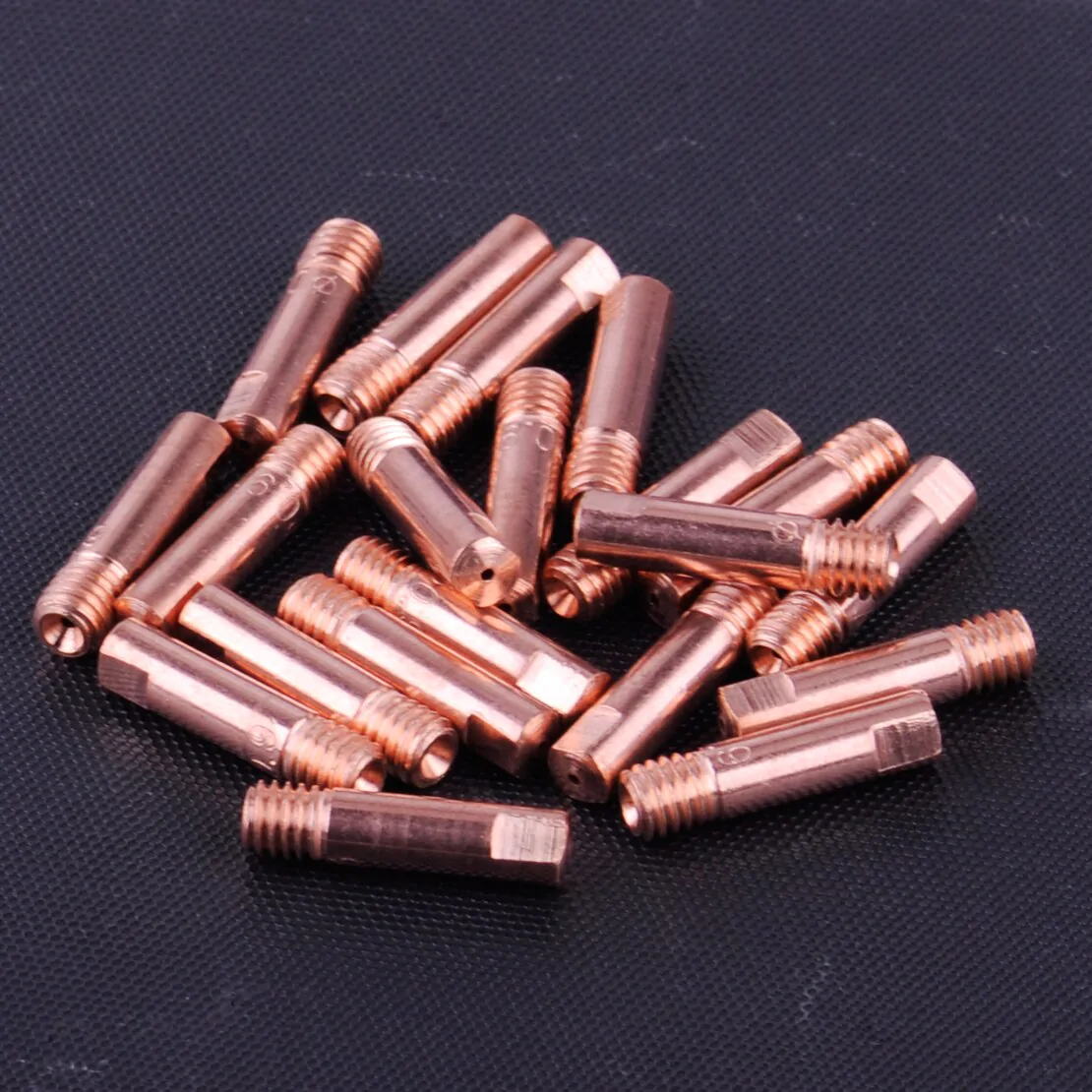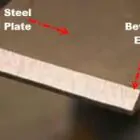Although welding equipment and robots set the stage for productive MIG/MAG welding, the real work is done at the torch body. Wearing parts, such as contact tips and gas nozzles, are subjected to extreme conditions during welding, including temperatures of up to 15,500 degrees, spatter from liquid metal, and constant abrasion by the welding wire. What, then, can be done to put off this equipment’s destruction for as long as possible?
Reducing the frequency with which consumables like contact tips, gas nozzles, and hosepack inner liners need to be replaced is beneficial for both the environment and the bottom lines of businesses and consumers.
When the wearing parts are optimized for the welding technique and also for the material on which it will be welding, the welding lasts longer. This is why aluminum welding and CuSi applications call for a different set of wearable components than steel and CrNi alloys.
Wear parts will always last longer when the welding process and the welding material are into consideration.
One question requires answering before we get to the four steps: why do wearing components become less effective over time?
One constant about the contact point is that it will eventually wear out.
In MIG/MAG welding, current is transferred to the welding wire via a “slide contact,” which means that the wire and the nozzle are in constant touch with one another and grind against one another as they move along the welding torch.
Therefore, “grinding out” is a primary reason why contact tips wear out and become useless. Welding wire and contact tip are no longer in constant touch. This is because grinding changes the inside of the contact point over time. After a while, the arc and the current flow become unstable, necessitating replacement of the nozzle.
However, the contrary can happen as well: a layer of alloy can form on the contact tip due to wire wear and high temperatures. The contact tip’s interior gradually enlarges until it blocks the wirefeeder.
Fighting splatter with gas nozzles
The gas nozzle is another major component of a MIG/MAG welding torch that is subject to wear. It’s the cause of the gas shroud forming above the arc. If the gas nozzle gets too hot, additional splatter will stick, and eventually it will fuse with the gas nozzle and be impossible to clean off. A cool nozzle can easily deflect a spatter.
Steel and aluminum require different nozzles, with gas nozzles for aluminum frequently coated to make the relatively soft aluminum spatter easier to remove.
The inside linings of hosepacks
For the FCS connection, the inner liner begins at the power supply and extends through the torch body to the contact tip, where it wears down over time due to the constant rubbing of the welding wire.
Inner liners should be used that are optimally matched in terms of design and inner diameter to the welding system in use to obtain the greatest possible service lives and safely conduct the appropriate welding procedures.
How, then, can we keep gas nozzles and contact tips from wearing out prematurely?
Choosing the appropriate product is all that needs to be done for the inner liners; nevertheless, the situation becomes more complicated when it comes to the contact tips and gas nozzles. Taking these four steps can greatly extend the useful lives of these components:
First, make sure that the contact tip and the welding wire are in sync.
The contact tip’s durability is highly dependent on the correct pairing of welding wire and tip, more especially the wire’s diameter and the tip’s bore diameter.
The complicated interplay of several elements such as amperage, stick out, and wire quality render expert assistance important. Without it, it would be impossible to specifically meet the numerous requirements. Think about a situation where you need a contact tip with a slightly smaller bore diameter. You can use such a tip for long duration before it wears out.
Wire corkscrewing, or the degree to which the wire bends in the contact tip, can also affect how long a contact tip will last. Inadequate wire corkscrewing will result in premature contact tip grinding out. If the wire corkscrewing is too great, the sliding contact – and hence the welding process – won’t perform very well. What is the answer? There are currently cutting-edge contact tips available on the market, such as those from the Contec split tip system, which wear very uniformly and guarantee very steady welding processes. If you’re working with aluminium or need a high quality current transfer, we suggest Contec.
Second, make sure you’re using premium contact tips.
The durability of a contact tip is dependent on a number of factors, including it’s construction material. There are presently three distinct varieties of contact tip in use:
Poor performer, electrolytic copper (E-Cu). Electrolytic copper contact tips are not for robot applications due to their softness, lack of heat resistance, and limited durability. However, the high purity of the copper does assure an excellent flow of current.
CuCrZr (copper-chromium-zirconium) is the gold standard in the business. CuCrZr contact tips have been the standard in recent years. Chrome and zirconium in the alloy make the nozzles tough and resistant to high temperatures.
Tungsten copper of WQ quality is among the best in terms of durability. Although WQ contact tips are more expensive to purchase, they save money in the long run since they last five to fifteen times as long as CuCrZr contact tips. In what way? Less frequent breaks in production are unnecessary. Especially for high-strength steel wires, this makes them a cost-effective option. Whatever is their “secret,” I hope it’s good. Tungsten and copper form a super-sturdy alloy for the front half.
Thirdly, we will take steps to lessen the impact of heat on gas nozzles and contact tips.
The gas nozzle and contact tip are set at the front of the torch body, where they are exposed to the highest temperatures. Both of the following can be done to reduce the impact:
Keep a safe distance by keeping the working portion as far away from the torch body as possible; this will reduce the amount of heat radiated to the contact tip and gas nozzle. For every millimeter removed from the torch’s operating component, the temperature at the front of the body reduces by 50 degrees. An extension of merely 4 mm reduces the gas nozzle’s temperature exposure by 200 degrees, making a huge effect.
Do not underestimate the impact of nozzle form on gas nozzle and contact tip temperatures while making your selection. Welding with a short stick out requires “pointed” contact tips and gas nozzles. They feature narrower front holes, so less heat is transmitting into the nozzle when in use.
Conclusion.
Essentially, the following factors determine the useful life of MIG/MAG process wearing parts:
- Choosing the right wearable parts and giving careful thought to how they will interact with the environment.
- Reliability of the used and worn parts, especially when you subject them to mechanical and thermal stresses.
- How the parts that move fit in with the rest of the welding system.
Cleansing methods that help in finishing the job.





